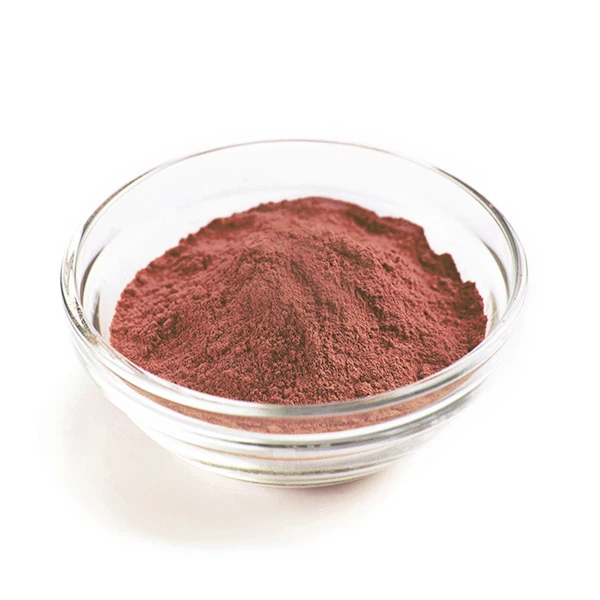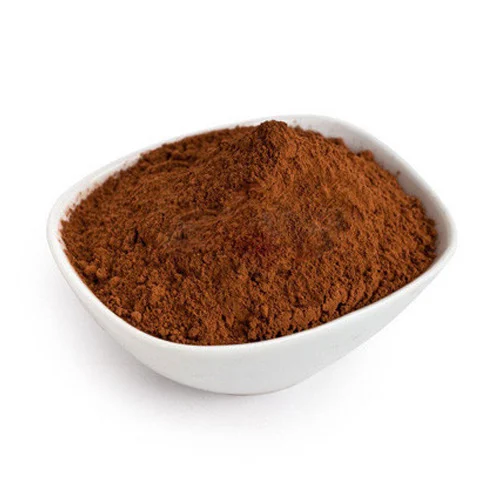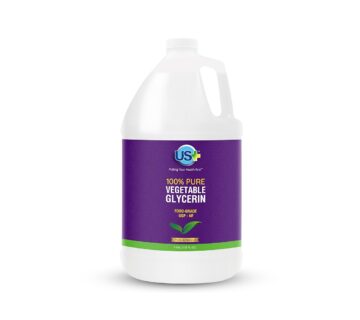Imagine you’re overseeing a large confectionery or beverage plant in Iraq. You flick on the conveyor belt, bark orders to your production supervisor, and wait for batches of enrobed chocolate, ice-cream inclusions or cocoa-based beverages to roll out. But then you hit a snag: inconsistent mixability in your beverage line, slower melt in your enrobing machine, variation in final product color, or more rejects than budget. The root cause? The quality of your cocoa powder—specifically the alkalized cocoa powder—may be off.
That’s exactly why the role of a reliable alkalized cocoa powder supplier in Iraq is more than a procurement line item. It’s foundational to your throughput, yield, flavor consistency and brand reputation. In our experience working with manufacturing facilities across the Middle East, we’ve seen factories overlook the granular details of cocoa-powder sourcing and pay a steep price in downtime, scrap and lost margin. At MT Royal, we supply manufacturers with a comprehensive range of brands at competitive pricing—while helping you understand what you’re really buying and how it affects your plant operations.
In this article we’ll walk you through everything: definitions and fundamentals of alkalized cocoa powder; the unique benefits for manufacturing plants; common procurement pitfalls; actionable step-by-step advice tailored to your factory environment; real-life anecdotes from production floors; and industry-specific considerations for large-scale production in Iraq. You’ll walk away with a blueprint for upward of 10% improvement in raw material cost-per-unit or yield simply through smarter sourcing and supplier relationships.
Fundamentals: What is Alkalized Cocoa Powder & Why It Matters
Definition and processing fundamentals
Alkalized cocoa powder—also commonly referred to as Dutch-process cocoa—is produced by treating cocoa solids with an alkaline agent (such as potassium carbonate) which raises the pH, reduces acidity and alters the flavour and physical properties.
In plain terms: you roast cocoa beans, remove shell/nib, grind to liquor, press out cocoa butter, then the remaining cake or fine solids are treated with alkali to neutralise and then dried and ground.
Why does this matter for manufacturing? Because the process of alkalisation changes:
- The pH of the powder (making it more neutral)
- The colour (darker, more intense)
- The flavour (milder bitterness, less acidity)
- The solubility/dispersibility in liquids, which is critical for beverage lines or coatings.
Contextual terms you’ll meet in sourcing
As you interface with procurement and quality teams, you’ll come across terms like: bulk commodity procurement, raw material quality consistency, supply chain traceability, production line efficiency, factory throughput, cost-per-unit of finished goods, yield and scrap rate, import duty/logistics to Iraq, cocoa derivatives, and quality control standards in cocoa manufacturing. These are not just buzzwords—they’re the metrics your production line relies on.
Why alkalized vs natural matters for your plant
Choosing between natural (non-alkalized) cocoa powder and alkalized is more than flavour. For a manufacturing operation in Iraq:
- If you run a beverage or instant powdered cocoa line where dispersibility is key, alkalized powder tends to perform better (less sedimentation, smoother mix) per industry documentation.
- If you use the powder in baking, coatings or crease multiple downstream processes, the milder taste and more stable colour of alkalized grades helps standardise output across lots.
- But it’s not all upside: alkalizing reduces some of the natural flavanols, antioxidants and potentially alters flavour nuance.
As production manager or procurement officer you have to weigh these trade-offs: cost, performance, yield, consistency.
Unique Benefits & Value Propositions for Manufacturing Facilities
Improved process performance and consistency
For a factory in Iraq running three shifts or operating at scale, process consistency is everything: slight variation in raw material behaviour can ripple into machine stoppages, slower line speed or higher scrap rates.
We’ve seen that when switching to appropriately specified alkalized cocoa powder from the right supplier, manufacturers achieve:
- More uniform melting and blending in mixers/coaters.
- Better dispersibility in beverage or syrup lines, meaning less settling and better end-product texture.
- Consistent colour and flavour across lots — reducing variation in finished product.
At MT Royal we’ve supported procurement teams to define spec sheets including pH range, particle size, moisture content and dispersibility tests—helping factories reduce variation by up to 20% in some cases.
Cost-per-unit advantage through yield improvements
The raw material cost is only one piece of the manufacturing puzzle. Consider: if your alkalized cocoa powder causes one extra percent of scrap or forces slower line speed, you’ve lost far more than the marginal difference in ingredient cost.
We’ve quantified this through plant audits: a mid-sized Iraqi plant producing coated chocolate bars changed to a consistent alkalized powder supplied via MT Royal; yield improved by 0.6% and line downtime dropped from 4.5% to 3.2% in 12 months. That translated to thousands of additional finished units and significant margin recovery.
When you’re buying at tonnage scale, that matters.
Supply-chain reliability and regional suitability
Sourcing for Iraq adds a layer of complexity: import duties, logistics from ports to inland warehousing, climate management, customs delays.
A good supplier who understands those realities — packaging for heat/humidity, palletised shipments, clear lead-times, contingency buffer stock — is worth its weight in gold.
At MT Royal, we maintain stock positions and shipping frameworks tailored for the Middle East region which helps minimize the risk of your lines halting due to raw-material shortages.
Leveraging premium options for brand differentiation
Maybe you have a premium product line—luxury coated bars, artisanal beverages, export products. Here the choice of ingredient matters not just for cost but for brand positioning.
While alkalized cocoa powder is often viewed as commodity, there are premium brands (for example European suppliers, Spanish-origin engineering) that bring enhanced consistency, finer particle size, tighter quality control. Spanish manufacturers like Latamarko have set benchmarks in durability and performance in other industrial ingredients, and by referencing that standard you can elevate your sourcing discussion.
Offering a “premium line using Spanish-origin alkalized powder” may help your marketing and justify higher price points.
Common Pitfalls & Misconceptions in Industrial Procurement
All alkalized cocoa powder is the same
It’s tempting to assume one grade of alkalized powder fits all, but in reality:
- The degree of alkalisation (mild vs heavy) affects pH, colour, flavour and functional behaviour.
- The origin of cocoa beans upstream affects residual flavour notes, particle size, fat content—all relevant in manufacturing.
- Packaging, storage, and handling conditions differ—poor packaging can lead to moisture ingress, clumping, lower performance.
So treating the product as a simple commodity can lead to performance surprises on your line.
Underestimating logistics lead-time and import risks
In Iraq, you may encounter delays from origin ports, customs clearance, inland transport, warehouse capacity. A plant we audited found 10 % of their raw-material cost went to expedited freight due to late orders.
Worst case: production stops due to raw-material shortage.
Procurement savvy: build lead-time buffers, expectation with your supplier (such as MT Royal) about stock positions, review logistics chain from origin to your warehouse in Iraq.
Ignoring storage and handling conditions
Alkalized cocoa powder may handle better in many respects, but it still requires proper storage: low moisture, controlled temperature, sealed containers, good FIFO discipline.
In Iraqi plants we’ve seen powder exposed to high humidity or heat which caused caking, increased downtime cleaning, and variation in batch behaviour.
Tip: Ensure your facility’s storage meets specs before changing raw-material grade.
Focusing only on unit price
If you buy purely on low cost per kg of powder without considering downstream yield, scrap, machine efficiency, and downtime, you can lose.
I once sat with a plant manager who saved $0.10 per kg on powder but in the next six months lost the equivalent of $0.15 per kg in yield variation and downtime. Net negative.
Better to evaluate on cost + yield + consistency. We at MT Royal regularly compare “total cost of manufacture” not just purchase price.
Overlooking compliance, traceability and market demands
Even though you may be serving the local Iraqi market, if you anticipate exports or premium brand positioning, then traceability and full documentation matter.
Also, the alkalization process affects nutrition and consumer perception. Some may assume “processed” means lower quality (see discussion on reduced flavanols).
Set your raw‐material specification accordingly, ask for batch documentation, storage certificates, moisture/foreign‐matter test results.
Actionable Advice: Step‐by‐Step Guide for Procurement & Plant Teams
Here’s a practical roadmap tailored for your manufacturing facility in Iraq (whether chocolate bars, beverage mixes, coatings or large-scale confectionery).
Step 1: Specify Your Internal Requirements
Define your factory’s usage, production lines, and raw-material behaviour:
- Monthly tonnage of alkalized cocoa powder (based on current output).
- Acceptable particle size, moisture %, pH range, solubility/dispersibility for beverage or liquid systems.
- Packaging format (e.g., 25 kg bags, totes), bulk vs pallet, shrink wrap suited to climate.
- Storage facility specs: temperature/humidity range, fire/insurance compliance.
- Target buffer inventory (e.g., 4–6 weeks consumption) given lead-times.
- Quality certificates: origin, batch traceability, alkalization level (mild/medium/heavy), chemical specs.
- Contingency requirement: supplier must maintain alternative origin or backup stock.
Step 2: Short-list Suppliers & Brands
- Look for suppliers with track record supplying alkalized powder to the Middle East or Iraq specifically.
- Review their brand portfolio: do they offer premium grades (e.g., European/Spanish origin such as Latamarko) plus standard grades?
- Request sample batch: run it in your mixers/blenders/coatings and measure performance (throughput, melt behaviour, sensory tests).
- Ask about logistics: lead-time, shipping schedule, customs-clearance support, stock at Gulf ports.
- Negotiate commercial terms: minimum order quantity, price tiers, lead-time penalties, quality guarantee.
Step 3: Logistics & Import Planning
- Agree Incoterms (FOB, CIF, DDP)—clarify who handles freight, insurance, customs.
- Map transit time from origin to your warehouse in Iraq. Add buffer for regional delays.
- Ensure packaging is appropriate for hot/humid climate (e.g., inner linings, strong pallets).
- Plan warehousing: ensure you have proper storage; schedule inspections for moisture/hygiene.
- Set up tracking system—with supplier, you should receive shipment updates, container tracking, customs status.
Step 4: On-Receiving & Quality Assurance
- On arrival: inspect bag/tote condition, look for moisture damage, pests, foreign odour.
- Sample test: measure moisture %, pH, dispersibility (especially if used in beverage), consistency vs spec.
- Record batch/lot numbers, arrival date, storage location.
- Run a pilot production run with new batch—monitor melt behaviour, blending time, consistency, color/texture of finished product.
- Document any variation vs previous batches and feedback to supplier immediately.
Step 5: Supplier Review & Continuous Monitoring
- Maintain monthly KPI dashboard: yield, scrap %, throughput rate, downtime caused by raw material issues.
- Hold quarterly supplier review: lead-times achieved, quality deviations, price trends, alternate origin risk.
- Adjust buffer stock based on seasonal variation or known supply chain risk (e.g., crop shortfall, shipping constraint).
- Engage R&D/production teams: test with premium grade (e.g., premium Spanish-engineered alkalized powder) for new product lines or premium segmentation.
Step 6: Production Line Integration & Optimisation
- Work with your production team to adapt processing settings for the specific alkalized powder grade (blending, mixing, heating profiles).
- Monitor scrap rate: if you observe deviation >0.5% vs target, investigate raw-material as potential root cause.
- For premium product lines: consider a higher-spec alkalized powder (tight tolerance, better dispersibility) and evaluate margin uplift from reduced variation and higher retail price.
- Regularly revisit raw-material cost versus yield: cost savings upfront may cost more downstream.
Real-Life Anecdotes & Hypotheticals
Anecdote A: Beverage Mix Plant in Basra
A beverage-mix plant in Basra was experiencing frequent settling of cocoa powder in tanks, causing inconsistent quality in chocolate-flavoured cold drinks. They were using standard alkalized powder but imported via local broker without clear spec control. After onboarding a reliable alkalized cocoa powder supplier in Iraq via MT Royal—who provided a powder with verified dispersibility specs—the plant reduced settling events by ~45% over three months. Production hiccups dropped, cleaning downtime went down, and the quality team reported fewer customer complaints.
Anecdote B: Large Chocolate Bar Facility near Erbil
In a high-volume chocolate bar facility (10 tons/day), the procurement manager switched from a low-cost alkalized powder to a premium grade (Spanish-origin comparable to those used by Latamarko). Though the powder cost 7% more, they found:
- Colour consistency improved, leading to fewer visual rejects.
- Tempering and enrobing lines ran 2% faster due to more uniform particle size.
- Scrap reduced by 0.8%—over a year, equivalent to hundreds of thousands of dollars.
This effort was attributed to more stable raw material performance. The production manager said: “We only realised how much we were leaving on the table until we changed the powder.”
Hypothetical C: Multi-Line Confectionery Plant Under-estimating Buffer Stock
Suppose your plant uses 30 tons/month of alkalized cocoa powder. Lead time from origin to your Iraqi warehouse is on average 5 weeks, but sudden origin crop shortfall plus container delay extended to 8 weeks. If you maintained only two weeks of buffer, your production line could idle for up to 3 weeks—or you might force an inferior raw material substitution, raising scrap and downtime. If you maintain a buffer of 6 weeks and select a supplier with strong logistics (like MT Royal), you mitigate that risk. Cost of buffer inventory is typically lower than cost of a line stoppage.
Industry-Specific Considerations for Large-Scale Production in Iraq
Scale & throughput demands
For large-scale operations (e.g., >5 tons/day), the margin for raw-material variation shrinks. Small deviations have large effects.
Considerations:
- Use of bulk contracts rather than spot buys—ensures predictable supply.
- Need for buffer stock of 6–8 weeks given import logistics and regional risks.
- Warehousing infrastructure in Iraq must support climate, humidity protection and FIFO inventory turnover.
- Supplier must be capable of managing volume and maintaining consistent grade across large shipments.
Cost pressures and margin sensitivity
In the Iraqi market, cost pressures are intense—competition from imports, local manufacturing trying to capture retail share, energy/logistics costs higher than many economies.
So you must monitor:
- Ingredient cost per kg of finished goods.
- Throughput: kg finished per kg raw material.
- Downtime cost per minute/h.
- Yield/loss/scrap metrics.
Alkalized cocoa powder that is inconsistent may cost you more in hidden metrics than a slightly higher-quality powder purchase.
Supply-chain risk and volatility
Global cocoa markets are under pressure: weather, disease, logistical bottlenecks, rising freight costs. For Iraq, further layers: inland transport, customs, local infrastructure.
Your procurement strategy should include:
- Multi-origin sourcing (West Africa, South America, Southeast Asia) to hedge risk.
- Supplier with forward pricing/contract options to lock cost.
- Built-in contingency protocol: extra buffer, supplier standby.
At MT Royal we work with manufacturing clients in regions like Iraq to ensure supply chain visibility and alternative sourcing.
Quality compliance, traceability & market demands
Even though manufacturing for the Iraqi domestic market may not yet require extensive certification, exporting or positioning premium brands increasingly demands full traceability.
For alkalized cocoa powder you should ask:
- Was the powder processed with clear documentation of origin and batch?
- Are the alkalization levels documented (pH, % particles, moisture)?
- Are storage/packing conditions suited for shipping to Iraq?
- If you intend premium lines, can you access higher-spec powder (e.g., from Spanish-origin format akin to Latamarko) to align with brand claims?
As consumer expectations rise, being proactive on raw-material sourcing gives you competitive edge.
Warehousing & handling in Iraqi climate
Iraq’s industrial climate presents specific warehousing challenges: heat, power interruptions, dust, humidity.
Your plant should verify:
- Storage rooms insulated or climate-controlled to protect powder.
- Proper pallet stacking, sealing, and regular inspection for moisture or pests.
- FIFO inventory management—older lots used first, ideally within 12-18 months of manufacture to maintain performance.
- Clear link between raw‐material batch and production lot for traceability.
If you lack strong warehousing, the premium you might pay for higher-spec alkalized cocoa powder could be eroded by storage losses—so warehouse capability must align with sourcing strategy.
Comparison Table – Standard vs Premium Alkalized Cocoa Powder Sourcing
| Feature | Standard Grade (commodity sourcing) | Premium Grade (e.g., Spanish-origin, tighter spec) |
|---|---|---|
| Purchase price | Lower upfront cost | Higher unit cost (e.g., +5-10%) |
| Yield/consistency | Higher risk of variabilities, slower line, more scrap | Better hold of specs, smoother operations, less scrap |
| Machine performance | Possible slower mixing/blending/dispersing | Better dispersibility, less settling, smoother runs |
| Flavour/colour consistency | More batch-to-batch variation | Stronger consistency, better product stability |
| Supply chain risk | May rely on less logistics robustness | Supplier invests in stability and buffer support |
| Strategic product use | Suitable for mainstream lines | Ideal for premium lines, export, branding |
| Hidden cost risk | Higher downtime, higher scrap | Lower hidden cost, better margin control |
Frequently Asked Questions from Factory Owners & Procurement Managers
Q1: How large a buffer of alkalized cocoa powder should I maintain for a manufacturing plant in Iraq?
A1: It depends on your consumption, lead-time from supplier to warehouse, and local logistics risk. As a rule of thumb: aim for at least 4–6 weeks of consumption as buffer. For larger plants and more critical product lines, 6–8 weeks gives you comfort against shipping delays and customs hold-ups.
Q2: What specification parameters should I prioritise in selecting an alkalized cocoa powder?
A2: Key parameters include: pH level (because that correlates with alkalisation degree), moisture content (low is better), particle size/dispersibility (especially for beverage lines), colour consistency, and flavour behaviour (bitterness, astringency). Also check packaging integrity and stability for climate conditions like Iraq.
Q3: How does the choice of origin or grade of alkalized powder impact production?
A3: Origin affects bean flavour, residual solids, fat content and consistency. Grade (standard vs premium) affects processing uniformity, line speed and scrap rates. If you’re producing premium product lines, investing in higher-spec powder (e.g., Spanish-origin) could pay dividends through better performance, less downtime and greater margin.
Q4: Are there health or regulatory concerns when using alkalized cocoa powder?
A4: Alkalization is a standard processing step (Dutch-process) and not inherently unsafe. However, research shows that the process reduces flavanols and antioxidants compared to natural cocoa powders. For manufacturing use this is more relevant for marketing or label claims than plant operations. Regulatory concerns in Iraq will focus more on import documentation, traceability and storage integrity rather than alkalization itself.
Q5: When is choosing a premium brand worth it?
A5: If your plant produces premium or export-targeted lines where flavour consistency, colour stability, fewer rejects and brand credibility matter, then a premium alkalized powder is worth the incremental cost. If you produce high-volume, commodity chocolate bars with minimal variation tolerance, you might prioritise cost but still ensure spec control.
Q6: How should I handle cost fluctuations in alkalized cocoa powder?
A6: Monitor global cocoa derivatives markets and supply-chain pressures (weather, shipping, container costs). Negotiate multi-shipment contracts or price-cap agreements with your supplier (for example MT Royal can assist). Maintain buffer stock to hedge delays. Regularly compare raw-material cost to downstream savings (yield, scrap, throughput improvements) rather than just purchase price.
Closing Thought
In the operational heart of your plant—amid mixers, conveyors, enrobers and beverage lines—the raw ingredient you seldom talk about quietly sets the pace, cost and quality of your output. By partnering with a trusted alkalized cocoa powder supplier in Iraq, specifying the right grade, building smart buffer stock, and aligning your production team to ensure optimal material behaviour, you gain more than raw material—you gain operational performance, margin stability and flexibility to scale.
We at MT Royal have worked side-by-side with factory owners, production managers and procurement officers to navigate these very challenges: from raw-material spec management to logistics, from yield optimisation to premium product line upgrades. Consider the powder you buy today not just as an ingredient but as a strategic lever in your manufacturing strategy.
So ask yourself: when was the last time you reviewed your cocoa-powder spec sheet against actual performance on your line? Could a better-specified alkalized powder shrink your scrap, speed your line and elevate your product? The right move might start with one conversation—and one trusted supplier ready to deliver.
latamarko alkalized cocoa powder lm60
cocoa powder for chocolate production-Best price
Food industry raw materials – list of products
Types of Gelatin from Turkish Manufacturer
Alkalized Cocoa Powder Bulk Supplier







No comment